Punching Baits for Bass in Northern States
Punching baits to catch fish might sound a bit aggressive, but whoever told you fishing is not a contact sport did not spend time working thick, matted vegetation. The thick stuff that birds walk on is a booming ecosystem. It provides homes from insects, amphibians, and fish of all sizes. All of that life attracts predators; especially, big bass.
Punching Baits for Bass with Teddy Bradley
“The best mats have an active ecosystem. Hearing frogs, bluegill popping insects, seeing herons, egrets, and blow holes in the mat is a sure sign bass are present,” said Teddy Bradley. Blowholes are pockets in the matted vegetation where a fish had exploded through the weeds to chase some sort of bait. It is clear evidence of bass in the area.
The Indiana angler spent years on the FLW Tour as a co-angler before competing as a professional angler in the FLW Tour Opens. He learned from many of the great punchers in the game and has since taken that knowledge to beat up competitors in local derbies. “Up north, few people know how to do it effectively,” and he is just fine with that.
Punching Baits v. Flipping v. Pitching
The vernacular among anglers can be confusing. Punching, flipping, and pitching are often mistaken for each other. “All three are different techniques,” according to Bradley. To be literal, flipping and pitching is short range casting to isolated targets. The difference is in flipping. The angler does not engage the reel. He uses the rod to lift the bait out of the water and flip it to the next target. Only on a hookset does an angler engage the reel when flipping.
Pitching is the same in presentation, but the reel is engaged to bring the bait to and from the boat. Punching is, essentially, like pitching. However, punching baits involves using a heavy weight to puncture the surface of thick, matted vegetation with the bait to target the fish under it.
With long summers in the south, punching becomes dominant on many waters. But the shorter summer seasons in the north minimize the density of weeds. As a result, this technique is often overlooked. But where the weeds grow thick, it can put huge bass in the boat that are unattainable with other techniques and with little pressure from other anglers.
Rigging up to Punch the Weeds
This style of fishing is not for the weak. “I use a 7’11” flipping stick with a moderate to fast tip,” says Bradley, who has two Top 10 placements in the FLW Forrest Wood Cup as a co-angler. “Some people like a stiff rod like a pool stick, but I believe that can tear too big of a hole in the fish’s mouth as it fights back. Plus, the moderate tip allows me to play the fish.”
His rod is matched up with up 7.1 speed reel and filled with 50 or 65-pound test PowerPro braid line. Faster reels do not have as much torque as slower reels, but they are being made better. And the faster reels help bring the fish through the thick stuff. 50-pound braid is optimal, but when fishing really thick stuff, it is not enough power. At this point Bradley goes up to 65-pound.
“I want to use the lightest weight possible that will still go through the weeds,” admits Bradley, “but I normally begin with ¾ ounce weights and will get as heavy as 1 ½ ounce.” He keeps the weight in place by inserting a rubber bobber stopper on top of it.
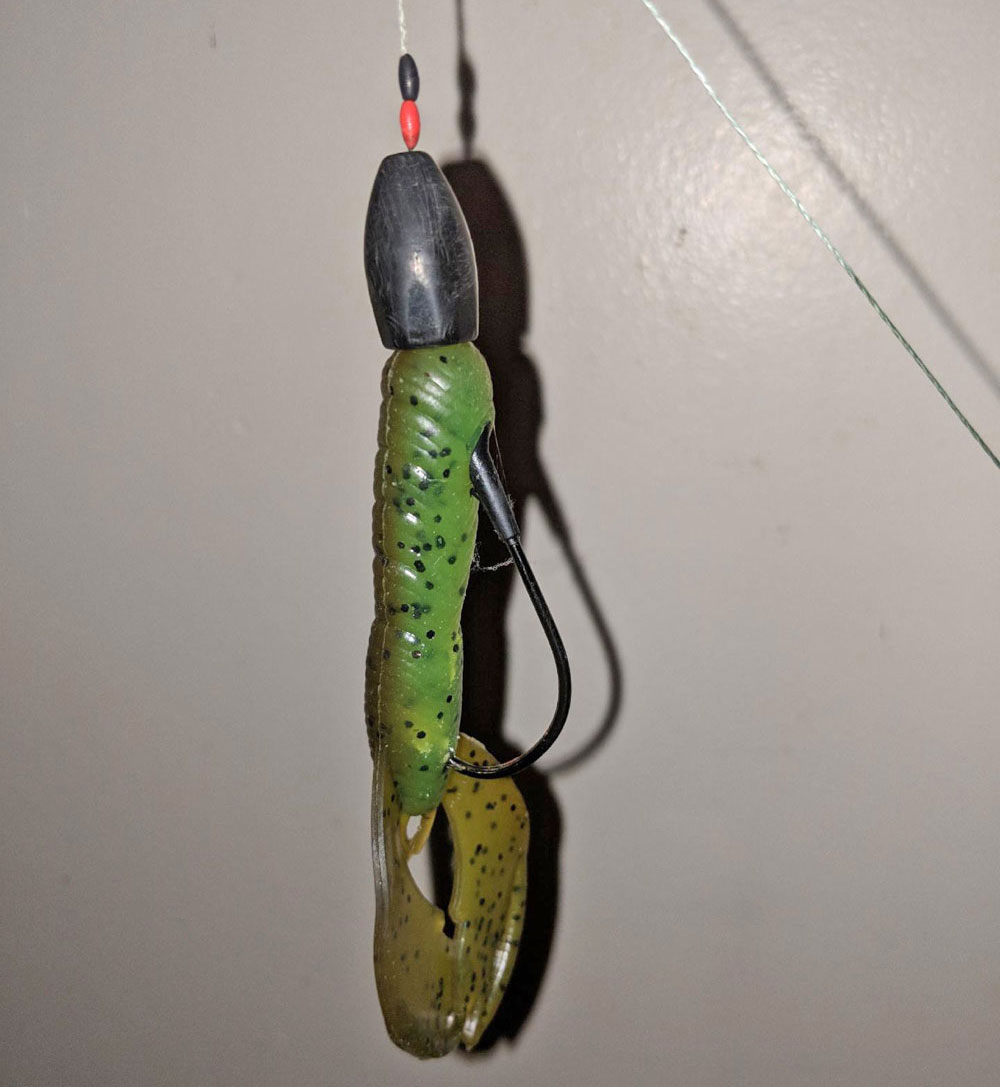
“The Lazer Trokar Flipping Hook is a good hook to use, but the most important part of the hook is that it is a straight shank.” He adds, “Using a snell knot when punching baits is critical. Setting the hook with a heavy weight and the force of the rod normally opens up the mouth of the bass. But, the snell knot forces the hook up on the hookset, which increases proper hook penetration.”
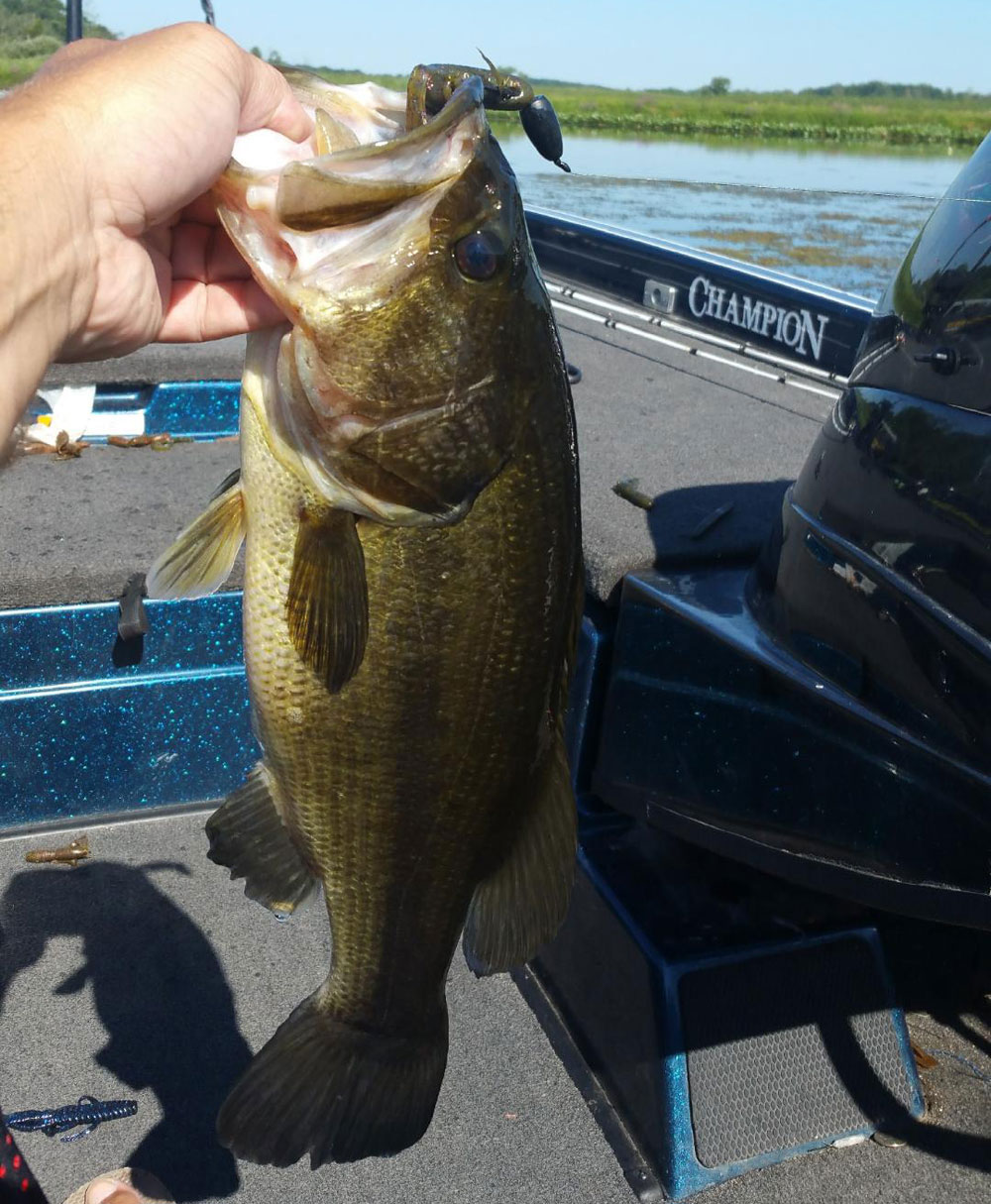
There are thousands of options for punching baits, but Bradley keeps it simple. He shares,“I just stick with a crawdad imitator and stay away from long legs and tentacles. The long legs create opportunity for a bass to grab the legs and miss the hook.”
Punching Baits – When
In the north, this technique is best during the dog days of summer, but it may begin earlier and last longer in the season. “Normally, this pattern begins in late June and goes through mid-September,” Bradley points out. “However, if spring is abnormally warm, and water temperatures get high and the weeds begin to grow thick, it is possible to find a good punching bite during the post-spawn as males will be guarding their fry in the thick weeds. Also, if the temperatures remain high into late September, this may work into October.” During the late season, focus on weeds that are still lush green. Once they begin to decompose, they begin depleting the oxygen out of the water, making it uninhabitable for fish.
Punching Baits – Where
The aforementioned active ecosystem is the utmost importance. “This, generally speaking, is a shallow water technique,” Bradley claims, “but depth is a relative term to the body of water. Normally, I am in less than 4 feet of water, but if matted vegetation in 15 feet of water exists, that could be just as effective. When shallow, the best spots will be where there is a change in depth.” Anywhere a ditch, trough, drain, or creek runs through the matted weeds is golden. If current is observed, there may be bass in droves.
Lack of sunlight prohibits the growth of weeds on the underside of the matted vegetation, making it easy for fish to roam. With that in mind, there must still be enough depth for the fish, but that only needs to be a foot.
“If I can’t see a noticeable depth change anywhere, I begin along the edge – any edge. A boat lane, for example, is excellent early in the day. Fish will often cruise along the lane early looking to feed. That makes the first four feet of the matted weeds is the best place to begin,” he explains. “As the day progresses, the bass tend to go deeper into the vegetation, and that’s where to go. As I go in, I keep alert for bait, insects, birds, etc.”
He targets anything different in the weeds. “Any place where two different types of vegetation come together, where the density of the matted weeds is noticeably different or forms a border, a piece of wood, anything that looks different or out of place from the surrounding mat is what I am going to cast to,” reveals Bradley. Bass are ambush predators, and these differences make exceptional ambush points.
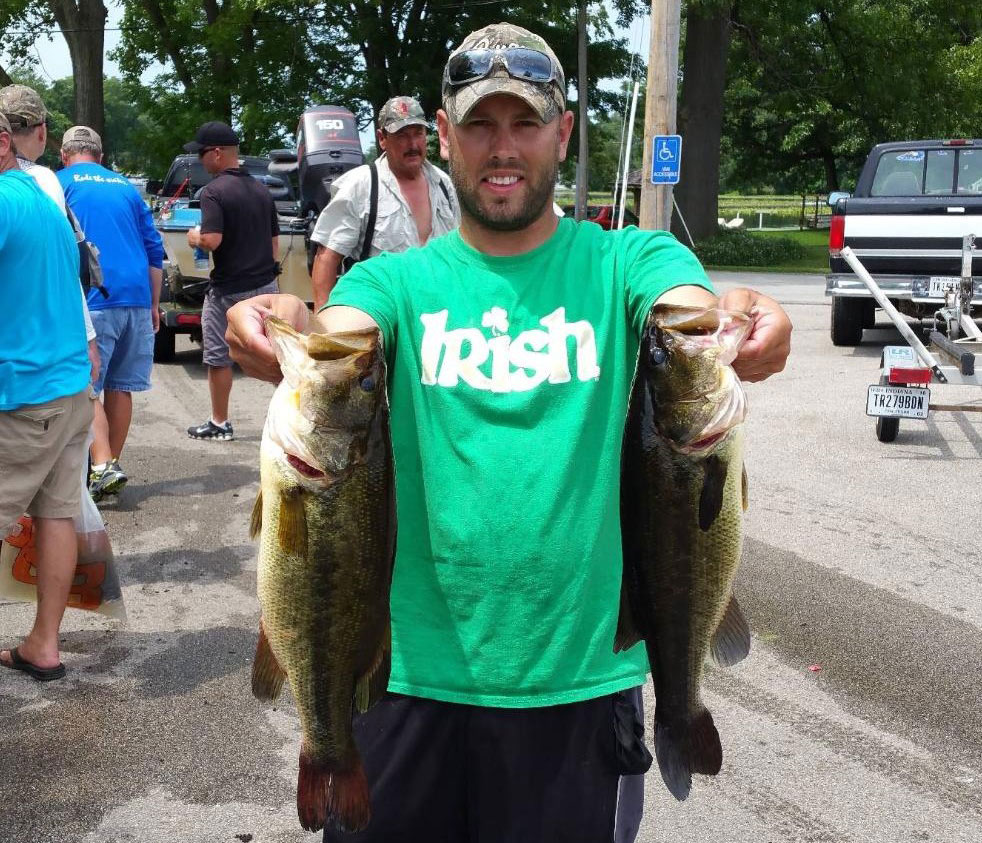
How to Punch the Weeds
Surprisingly, perhaps, “I make a cast every 4-5 seconds when punching baits,” Bradley says. Punching weeds with heavy weights is an energy consuming technique. “This is about covering water, and punching is about hitting specific targets. Whereas a long cast with a crankbait allows an angler to keep the bait in the strike zone for 50 feet, a cast while punching keeps it in the strike zone for just a couple of feet. This is why making so many casts is important.”
Frogs are exceptional baits around thick vegetation as well, but punching has its advantages. “When the vegetation gets thick, punching is advantageous over working a frog because you can cover so much more water. As the weeds get thicker, the frog must be worked slower to be effective. But by punching, I can cover more water, placing my bait in front of more fish, than with a frog.”
Bradley tries to make as quiet of an entry with his bait as possible. Recall his desire to use as light of a weight as possible.
“When you see birds walking on the weeds, it might be necessary to sling the bait 10 feet into the air to crash through. But that is not normally the case up north,” declares Bradley. “As it breaks through the weeds, it is important to keep contact, which means to feel the bait through the rod as it sinks.” This is because ¾ of his strikes occur on the initial drop. “After it hits bottom, I will ‘yo-yo’ it 2-3 times and then reel it in in for another cast. Some anglers work it much longer with success, but my goal is to cover water. If I make 100 punches compared to their 25, then simple math gives me an opportunity for more bites. This is purely a reaction bite. I am not trying to tempt a bass, I want it to instinctively react.”
Navigating in Matted Vegetation
While effective, this is a messy operation. Maneuvering through the dense vegetation poses considerable risks. The matted vegetation hides any hard obstruction that can inflict damage to a boat’s keel or a motor’s skeg. This makes the installation of a KeelGuard and SkegGuard essential. Trolling motor propellers can also be damaged from these objects.
Trolling motor batteries can fizzle after a few hours of fighting the dense weeds and a boat can look like a salad bar in a short matter of time. A push pole can save battery power, minimize the mess, and move around more quietly and efficiently. Stow the trolling motor and lift the outboard motor out of the water, and a boat can move around surprisingly easy and save the trolling motor from potential damage.
If your favorite body of water gets thick with weeds, do not fret. Arm yourself with heavy tackle, prepare to work, and prepare to load the boat with heavy bass.



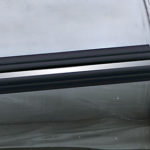
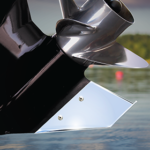
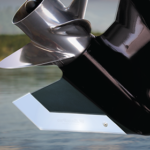

Comments